Western Australia’s illustrious Cable Beach in Broome perfectly fits the notion of an idyllic beach getaway. Its 22km stretch of white sandy shoreline and warm waters seduce holidaymakers with its golden sunsets and pastel sky aftermath, iconic camel chains and 4WD trailblazers, truly a one-of-a-kind destination.
But the surrounding regional sceneries present different standards of natural marine beauty. Expansive mudflats, sprawling marshes and ancient reef systems are under-the-radar destinations spread along Great Northern Highway. Exploring these sceneries is for those who have time up their sleeves and yearn for more than just being beach-bound but, of course, those sun-kissed starfish days in Broome are warranted too.
To fully absorb the spectacular seascapes of the Kimberley region, I embarked on a 685km road trip from Cable Beach to Halls Creek. It's worth ditching the towel in the sand for. Promise.
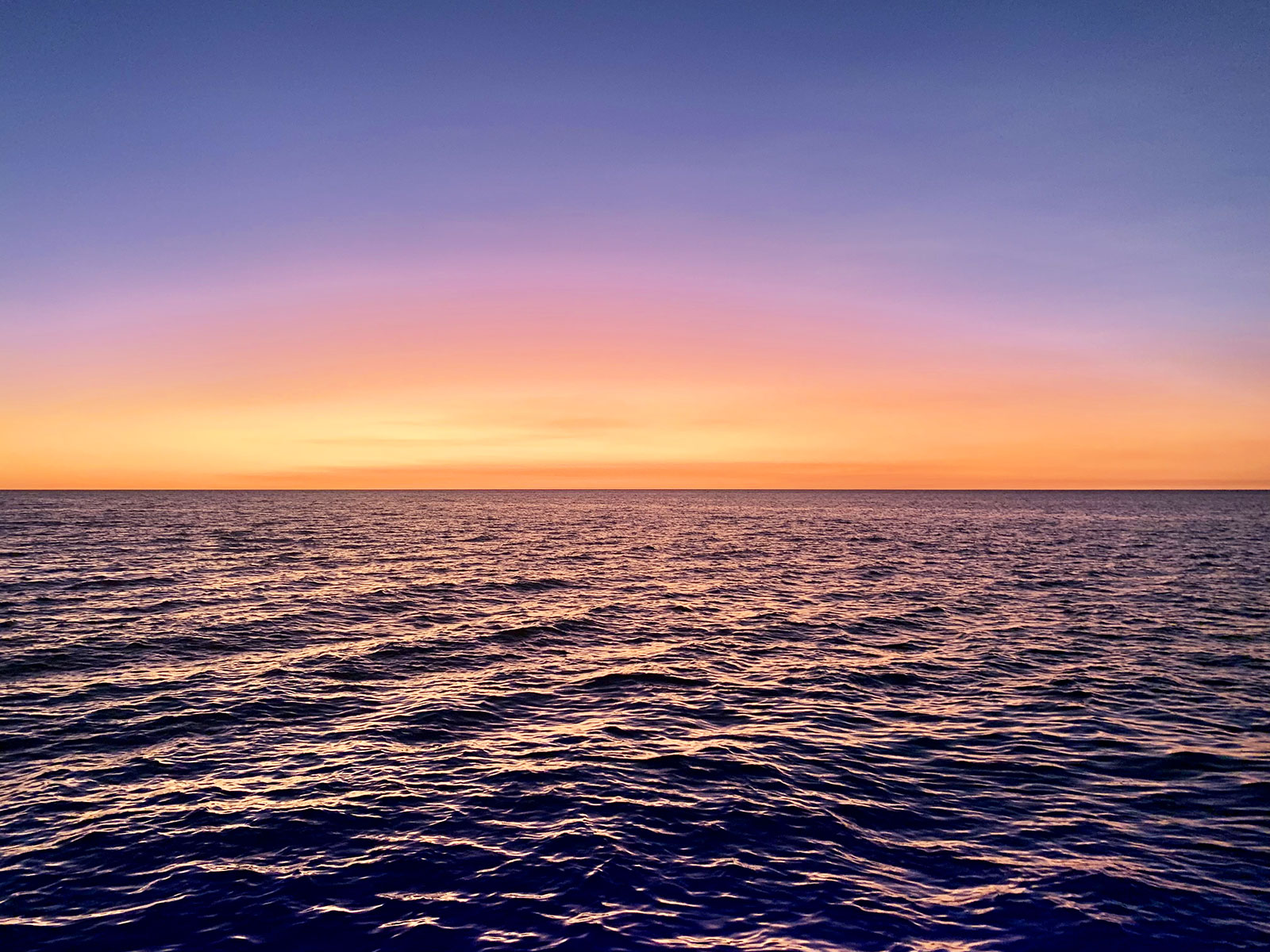


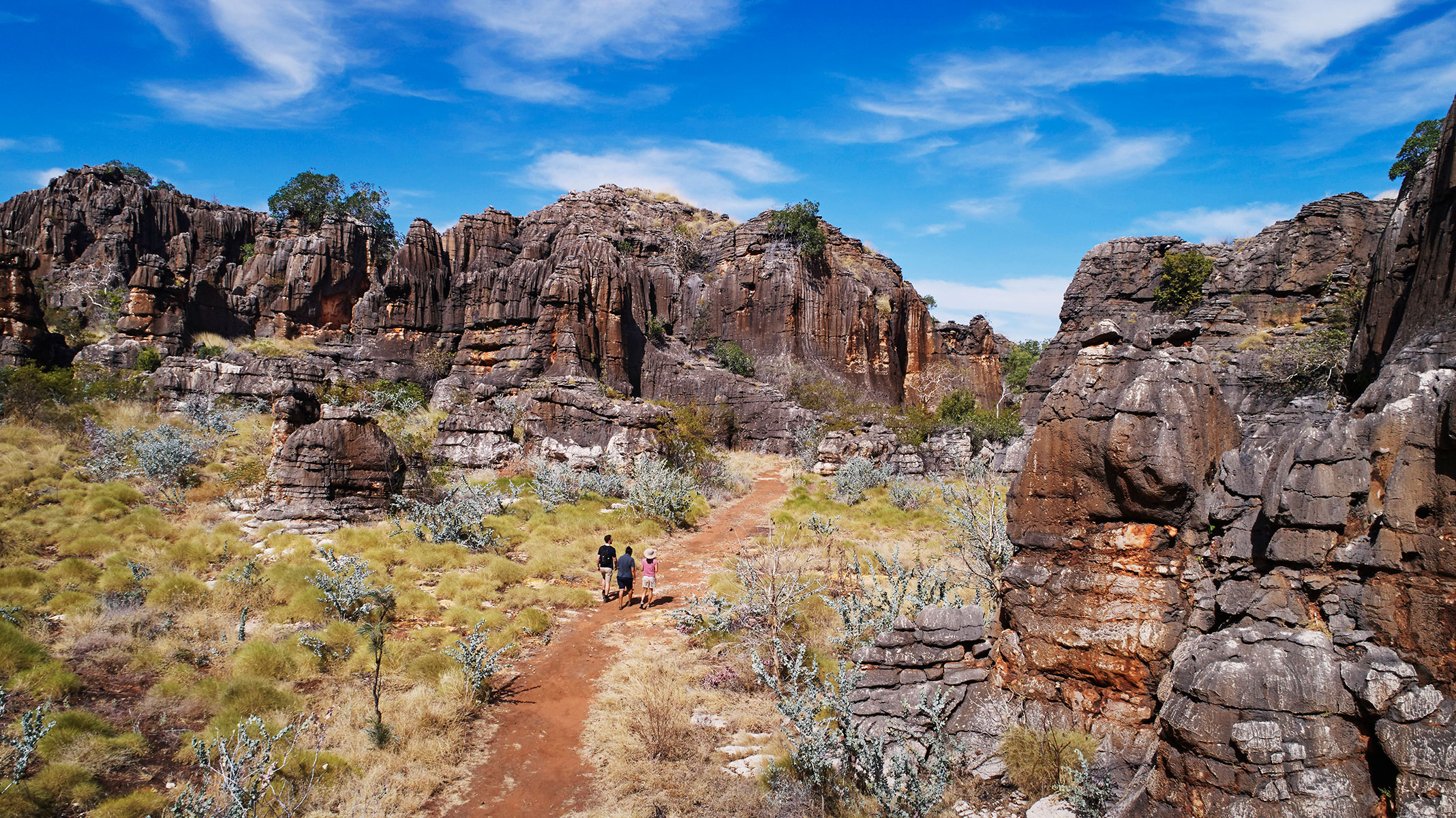
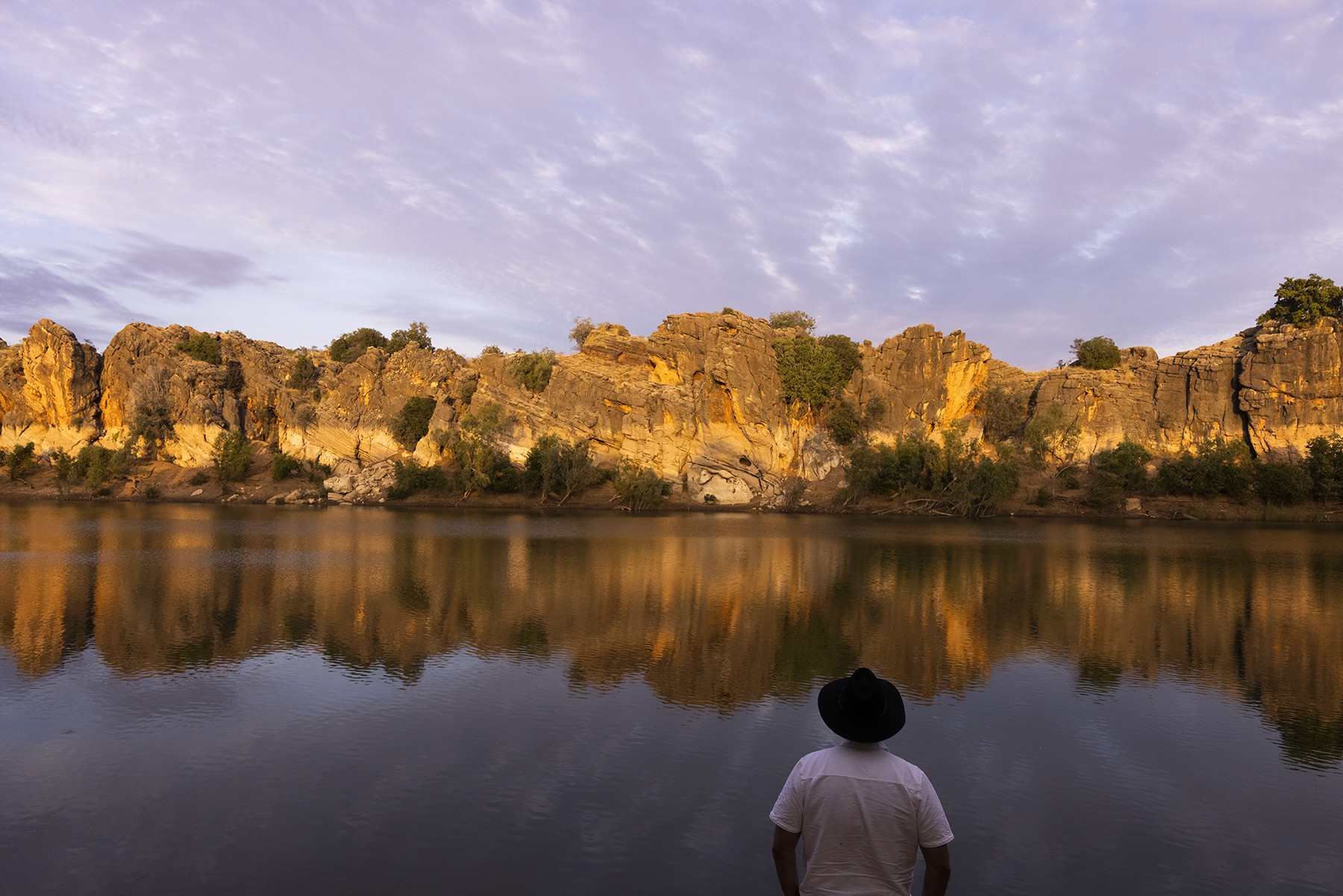

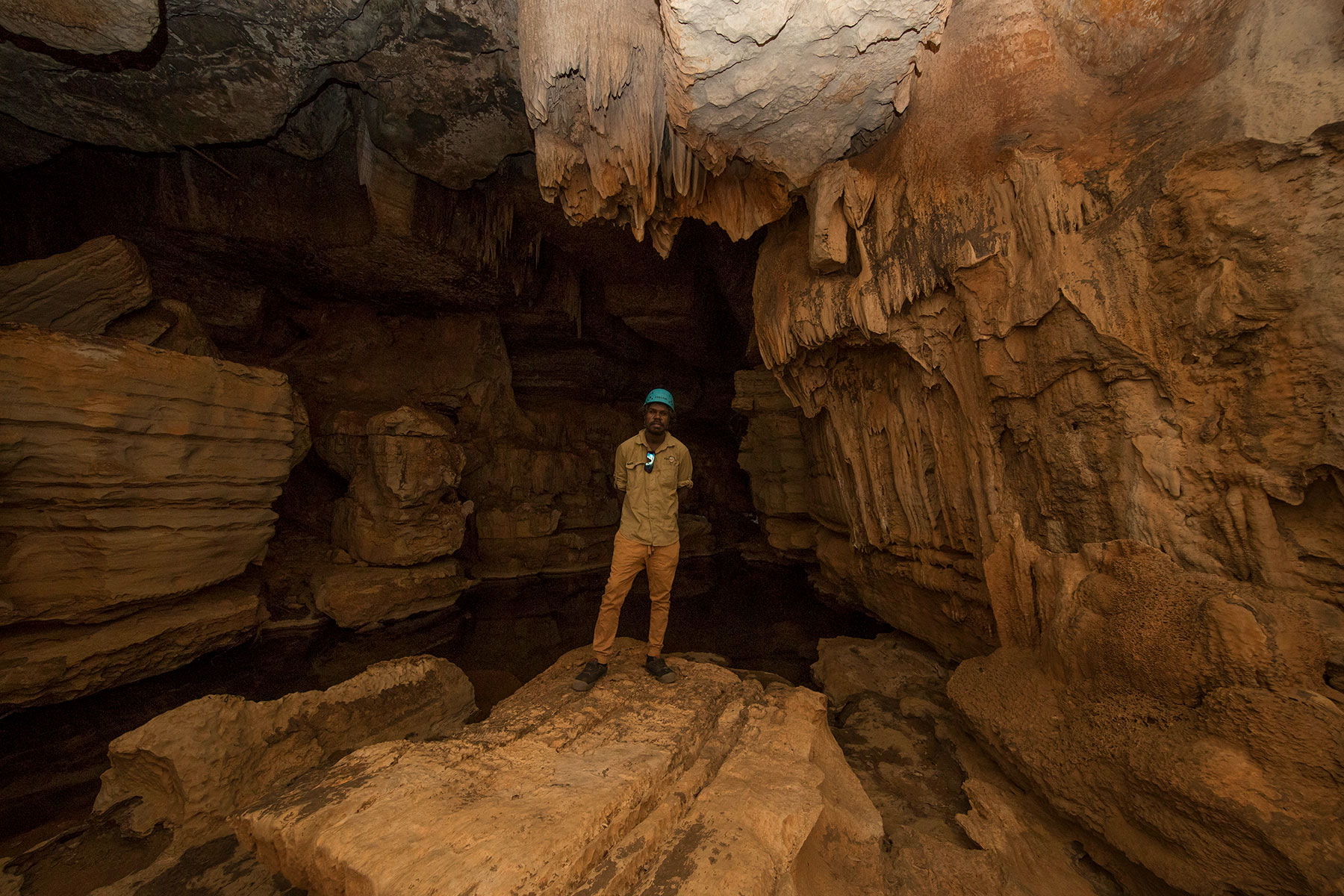
Bon Appetit Broome
Riding atop a camel's back is the postcard way to experience Broome's most famous coastline. Enduring that kind of bumpy ride didn't appeal to me, but another novel ride did.
It was time to board a 60Ft boat with Broome Cruises. The local tour operator combines the best of both worlds, voyaging the northwest's shimmering blue waters and admiring Cable Beach's grandeur from afar while sampling the best of the state: Exmouth prawns, Abrolhos sea scallops, Shark Bay crabs, Cone Bay barramundi, and oysters, prepared with native ingredients and served with Margaret River wines and specialty brews. Supporting local never tasted so good (despite the undoing of a beach bod).
Post feast we were rewarded with another kind of onboard indulgence: a live pearl harvest demonstration. Partnering with regional pearl farm Cygnet Bay, the unique showcase is an effortless way to grasp Broome's rich pearling history, seeing how it's done straight from the source.
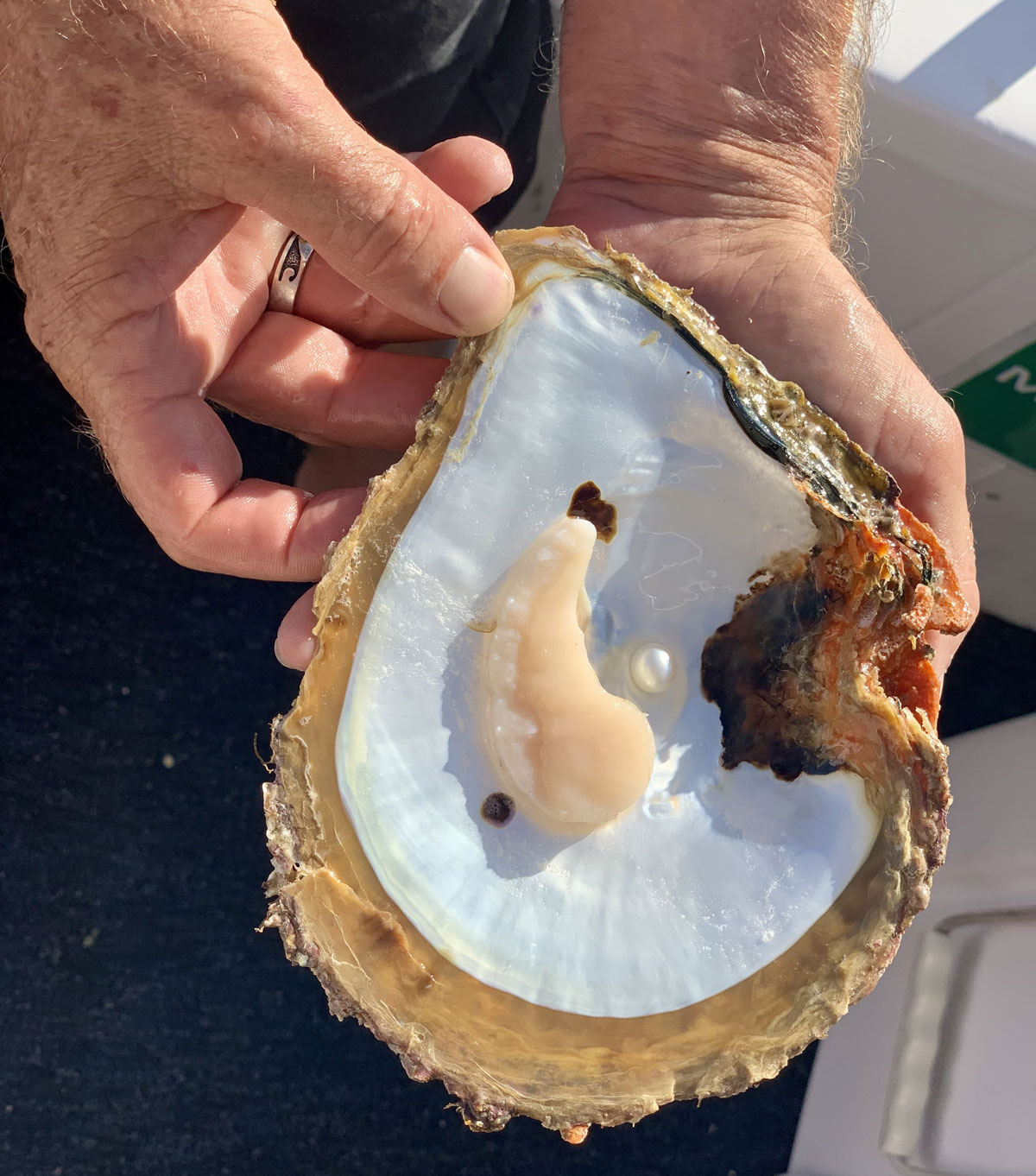
Anticipation filled the air as live oyster shells were pulled from ocean’s depths and onto the boat. A Cygnet Bay representative then demonstrated how to shuck shells to uncover Broome's most lustrous gem. There were, of course, no guarantees that a pearl would be found regardless of having years to cultivate.
After gently opening the oyster shell the size of her palm and performing careful surgery around the oyster's flesh, she soon revealed a glossy, pea-sized pearl.
"Anyone like to guess how much this pearl is worth?" the Cygnet Bay representative asked. Numbers were shouted across the boat as we eyed Broome's prized bounty.
"$2000!"
"$4000!"
"$10,000!"
Clearly, we had big dollar signs in our eyes. But it would remain a guessing game with a valuation in the town's showroom taking place the following day, as part of the second half of the tour*. However, there would still be one thing that we would savour from the great reveal: pearl meat. Harvested in small quantities, the highly sought-after Kimberley delicacy sells for roughly $200 per kg. As a shellfish fan, I appreciated this slice of exoticness, enjoying a small sliver cut from the shell and straight into our stomachs. That must’ve been $10 worth! The tasting preluded an epic sunset – a lavish way to cap off WA’s ultimate seafood safari.
Detour to Derby
Another type of treasure can be found in Derby, 220km northeast of Broome. While the seaside town of 4000 doesn't boast the same coastal charms, people are drawn to its distinctive locale at the tip of King Sound, along dramatic tidal mud flats. Beyond the mud, mangroves and marshes, there is much to discover.
 Derby Port
Derby Port
Art in Derby stares you in the face. The striking Sculptures on the Marsh art trail is a prime example. Four oversized metal sculptures spot the marsh surrounding the town, each locally produced and paying ode to the region's culture. A man's face in Contemplation; a lone stockman on horseback dubbed the Kimberley Ringer; the Mona-Lisa smile of the Kimberley Moon Goddess, located nearby Wharfinger's House Museum; and the trail's newest instalment, a group of Broglas, one of Australia's largest flying birds, permanently flying the skies.
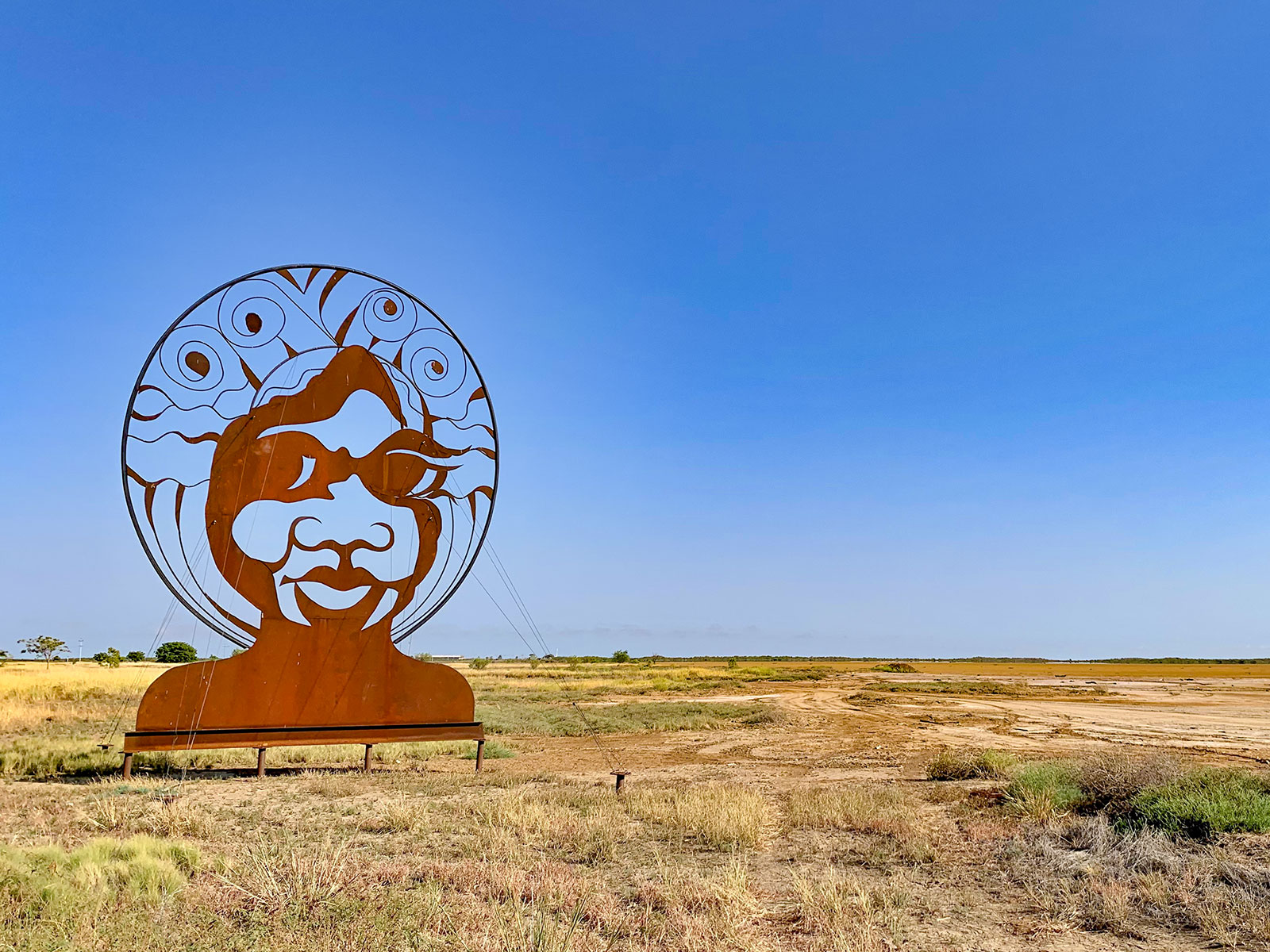
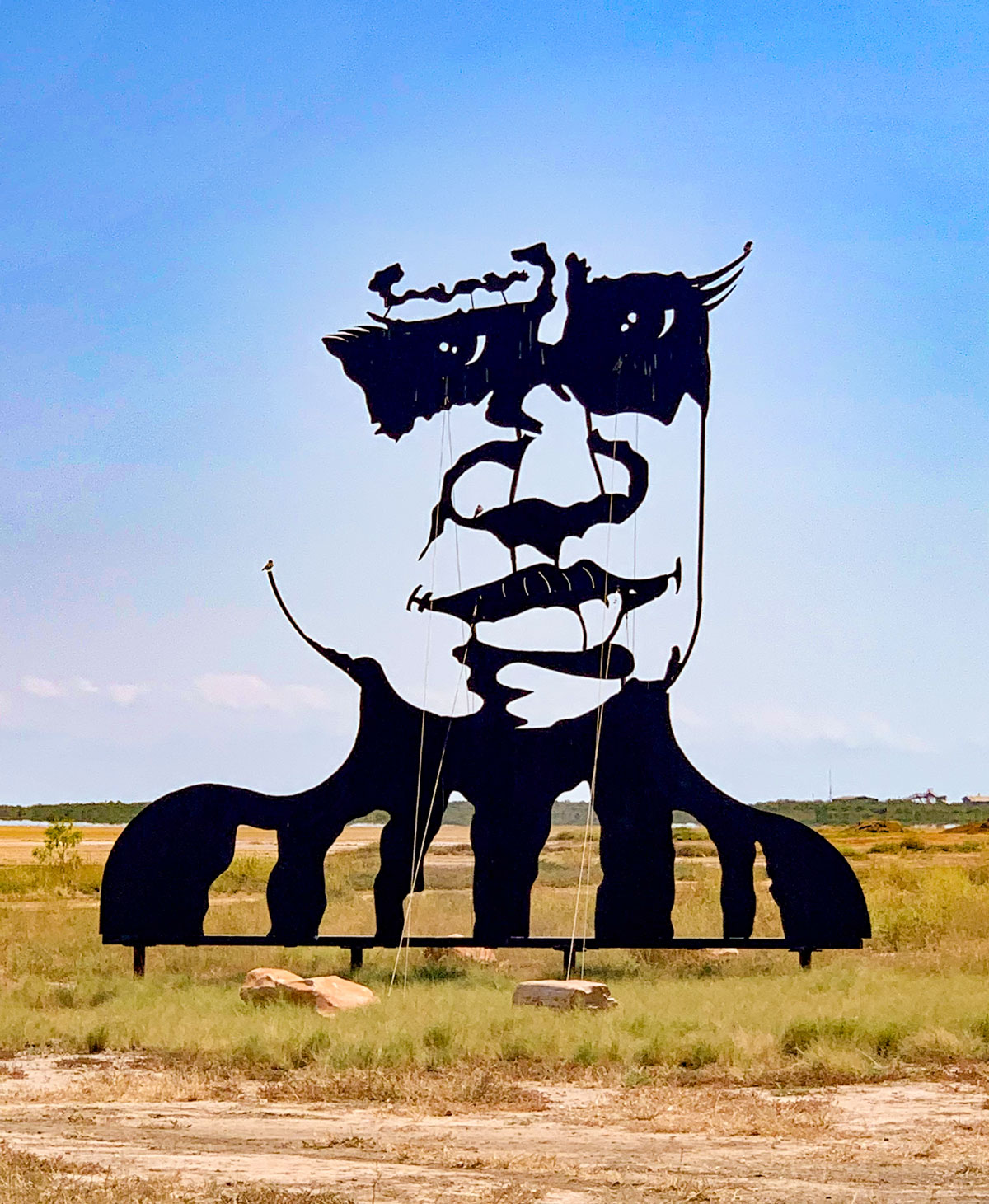
I wanted more than photographs to capture the mood so made tracks for Norval Art Gallery. Sitting opposite the Derby Visitor Centre, the art centre is managed by local artists Mark Norval (who designed 'Contemplation') and his wife, Mary. The centre promotes the indigenous artworks of local and regional artists and has an open-door policy for studio use.
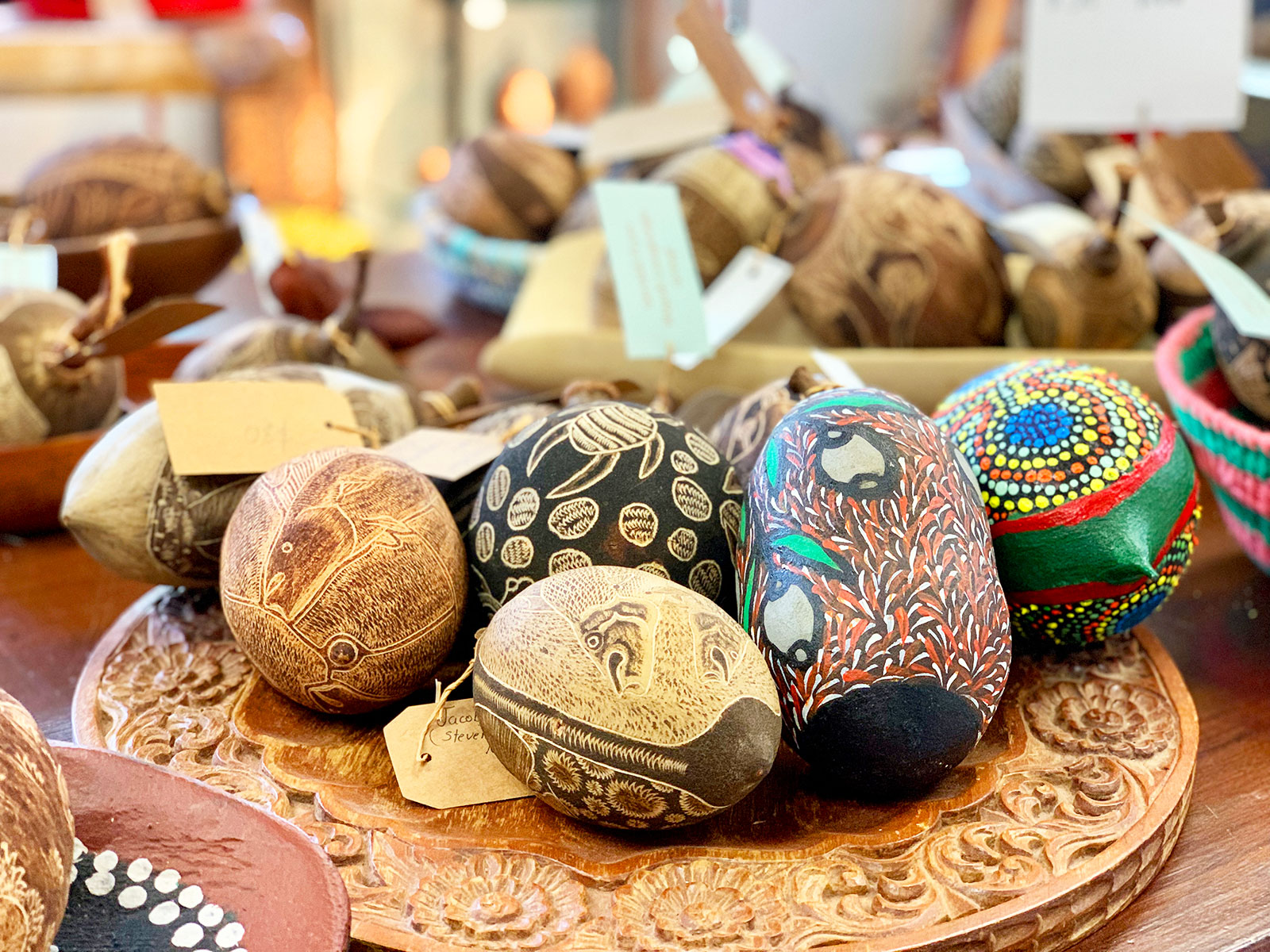
I couldn't help but notice the many brushed versions of the Wandjina – the creation spirit recognised by local indigenous groups Ngarinyin, Worrorra and Wunumbal. The centre is home to Australia's best-carved boab nut collection, and it's common to spot locals around town creating their mark on the naturally fallen. As I observed makers creating their new masterpieces on canvas and boab nuts in the studio, the seed was planted to make a purchase. Today, my painted boab nut, adorned with Wandjina, is proudly displayed in my home.
A cruise through time
I soon swapped artistic pursuits for another cruising adventure, travelling 278km east to Danggu Geikie Gorge National Park, just outside of Fitzroy Crossing. It’s a stark contrast to the pristine beaches of Broome. The Bunuba Aboriginal people are the traditional landowners bestowing the name 'Danggu', meaning ‘the area where water is deep under the cave’.
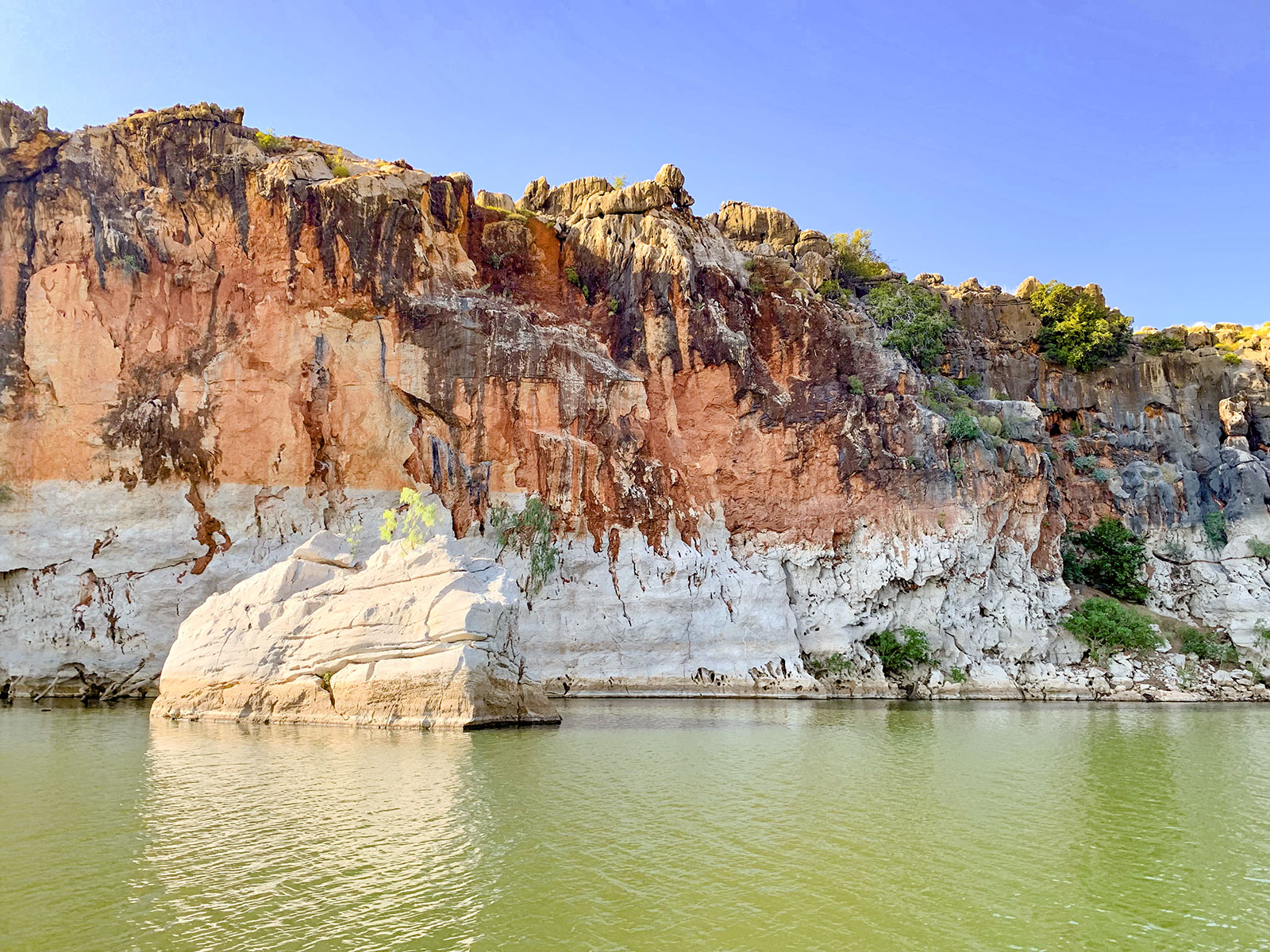
What was once submerged in the sea now stands as outback skyscrapers. The 14km-long gorge forms part of the Devonian Great Barrier Reef system, a rocky limestone range that’s more than 350 million years old and extends 350km across the Kimberley Plateau and Wunaamin Miliwundi Ranges (formerly King Leopold Ranges). Danggu's scenery includes a snippet of the 525km-long Fitzroy River, fringed by lofty, weathered cliffs, slicing through the Geikie and Oscar Ranges. Nearby attractions Windjana Gorge and Tunnel Creek National Parks also form part of the remanent reef system.
Raw, rugged, and absent of crowds, Danggu offers visitors a chance to cruise the Kimberley on a budget. The scenic cruise would be the best $50 spent across the Kimberley region. The ranger-led, one-hour morning boat tour meanders along the 30m-deep gorge, affording a close encounter with the area's compelling geological make-up and native wildlife.
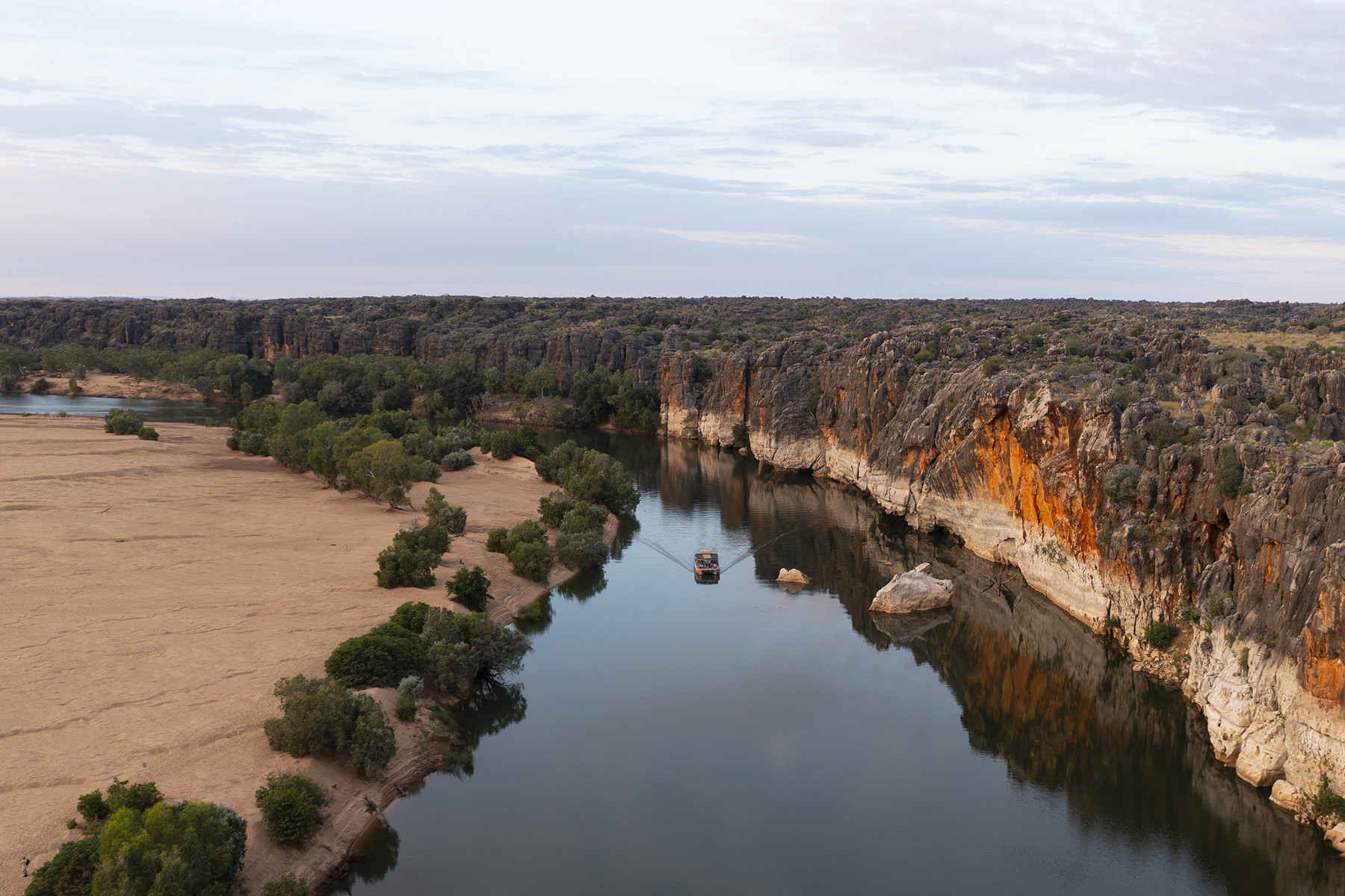
Cute fairy martins darted the sky as we slowly journeyed along the blackened river. Passing untamed forests and red sandbanks, the park's craggy cliffs – tiers of off-white, ochre red, grey and black – soon emerged. I was in awe observing the gorge's distinct earth tones with its bleached bands appearing along the lower section, painting a picture of flooding endured. Talk about left feeling high and dry! From November to April, the wet season causes the river to rise 10m above normal river levels, with flood record highs displayed in the visitor centre.
Despite enduring great fluctuation, the river attracts a healthy fish population with more than 35 fish species found, including bull shark, freshwater whipray and swordfish. As for crocodiles, they must have (mercifully) been having a siesta at the time of our tour. Bird-watching opportunities were abundant, their birdsong a perfect accompaniment for the morning junket.
Mimbi Caves
From wide spaces to narrow nooks, I ventured to another part of the Devonian Great Barrier Reef.
Mimbi Caves, located 116km east of Danggu, is considered one of the country's most significant geological sites. The extensive cave network is secreted within Emmanuel Ranges and can only be accessed on a two-hour walking tour, available morning and afternoon. I followed Gooniyandi guide Ronny, passing soaring limestone formations, blackened Karst cliffs and skeletal trees to enter the depths of the fossilised frontier.
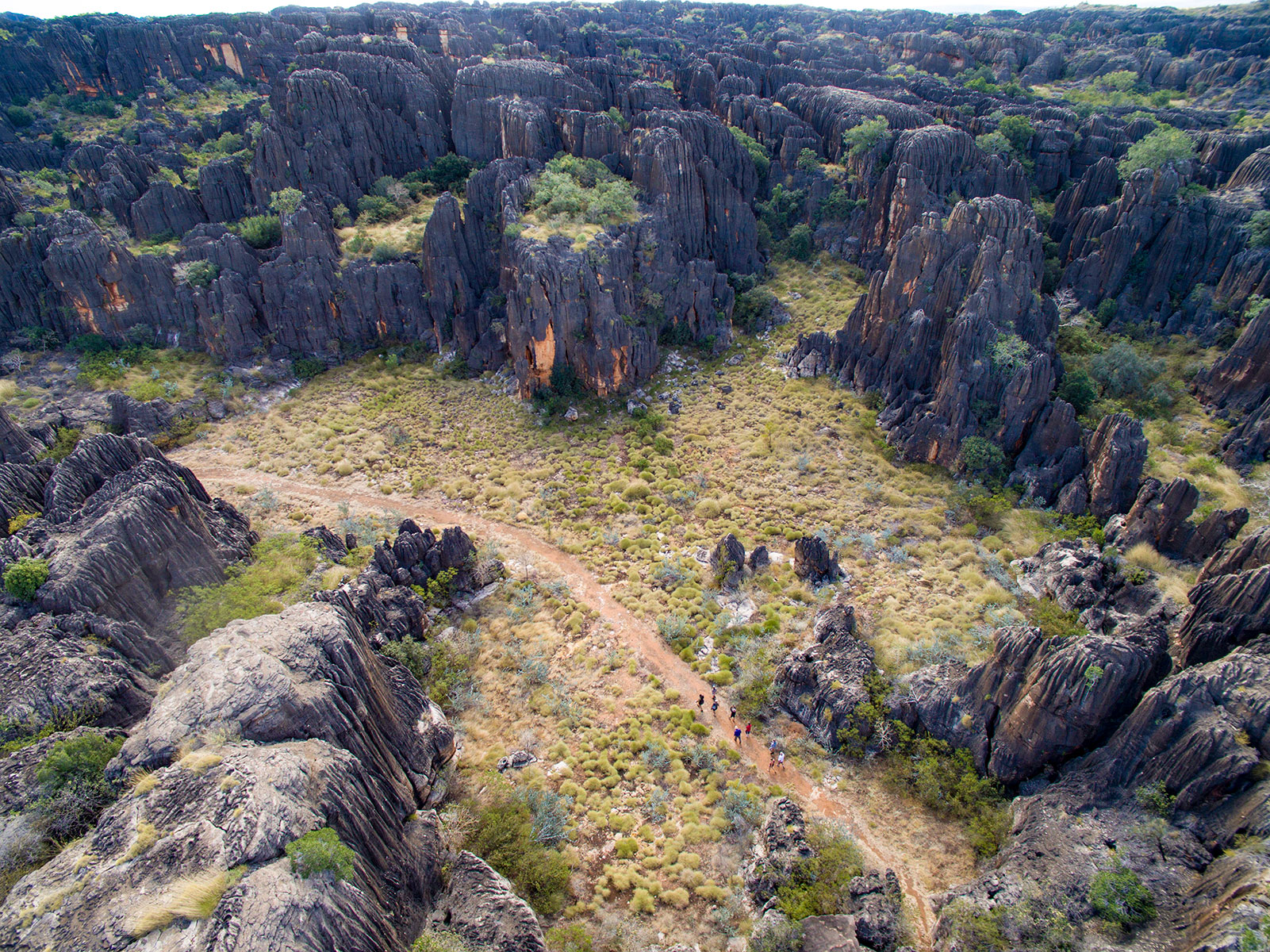
Hard hat on, torch in hand, it felt like navigating a hardcore maze. Some parts are effortlessly accessed on two feet, while other areas require slight body contortion and small boulder climbs. But the workout was worth it. It's considered one of the best-preserved fossilised reefs in the world. Traces of its marine past – corals, fish – are easily found within cave walls alongside freshwater pools, glittering crystal growths and ancient Aboriginal rock art; extraordinary sights all around.

Throughout the tour, Ronny pointed out local bushtucker and shared Dreamtime stories of the Gooniyandi people. And thankfully, the insight into local culture continued back at camp.
Mimbi Caves Campground is located a short drive away at the foothills of Emmanuel Range. It's part of the Camping with Custodians network of campgrounds on Aboriginal lands owned and operated by local Indigenous communities aiming to strengthen connection to Country by encouraging interactions with community members.
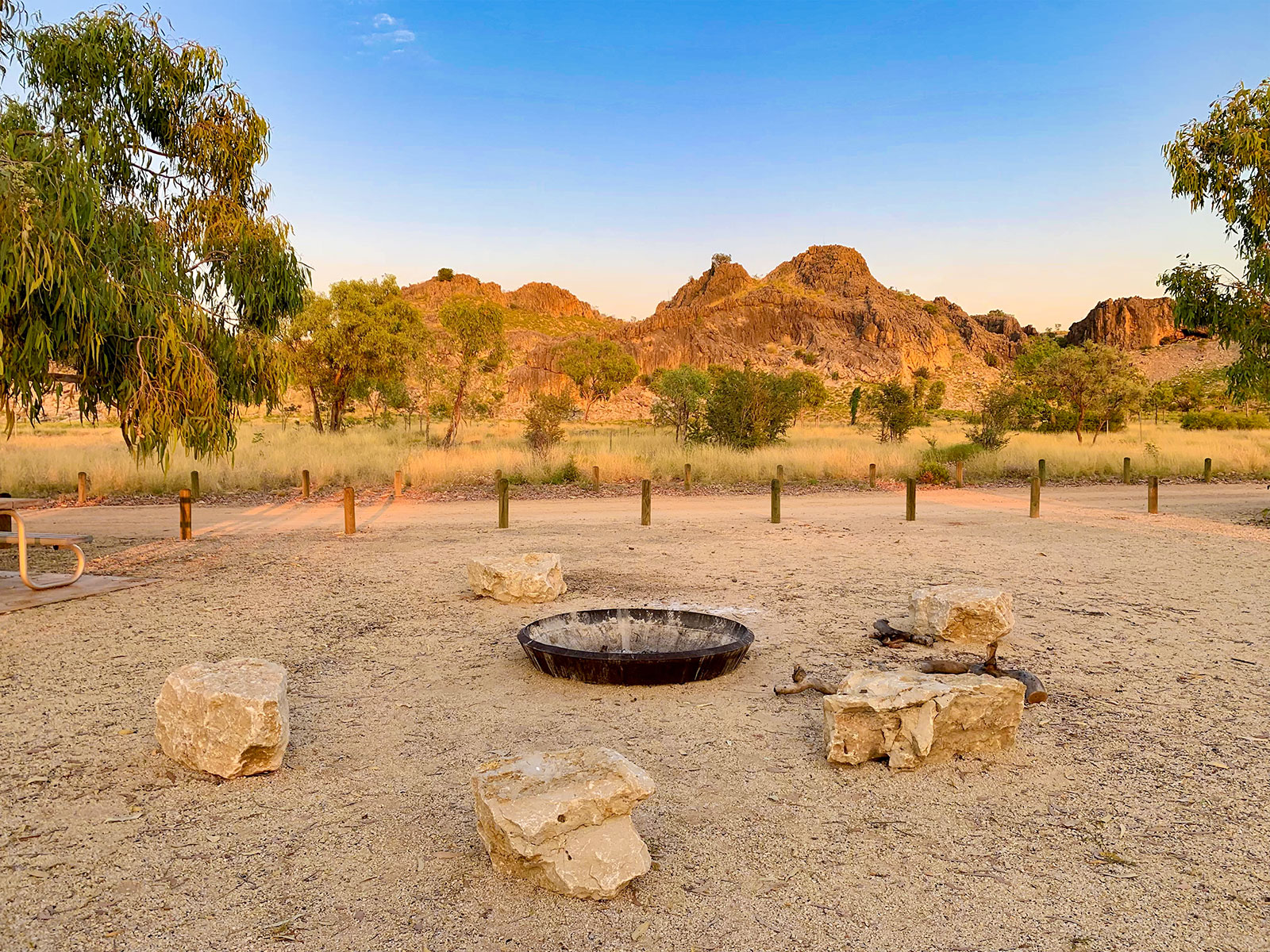
The campground boasts 15 unpowered campsites and features flushing toilets, hot showers and an inspired-by-nature large kitchen/barbecue undercover area. A yarning circle is situated between the kitchen area and the Emmanuel Ranges, a convenient way to soak up the scenery.
Ronny made a post-tour visit to the campground, much to campers' delight. His presence prompted a gathering around the campfire while soon preparing damper under a star-studded sky. As fire flickered and bread heated, Ronny soulfully strummed songs on his guitar, often interrupting himself to discuss social issues with those around the circle. Those in his presence left with bellies and hearts full.
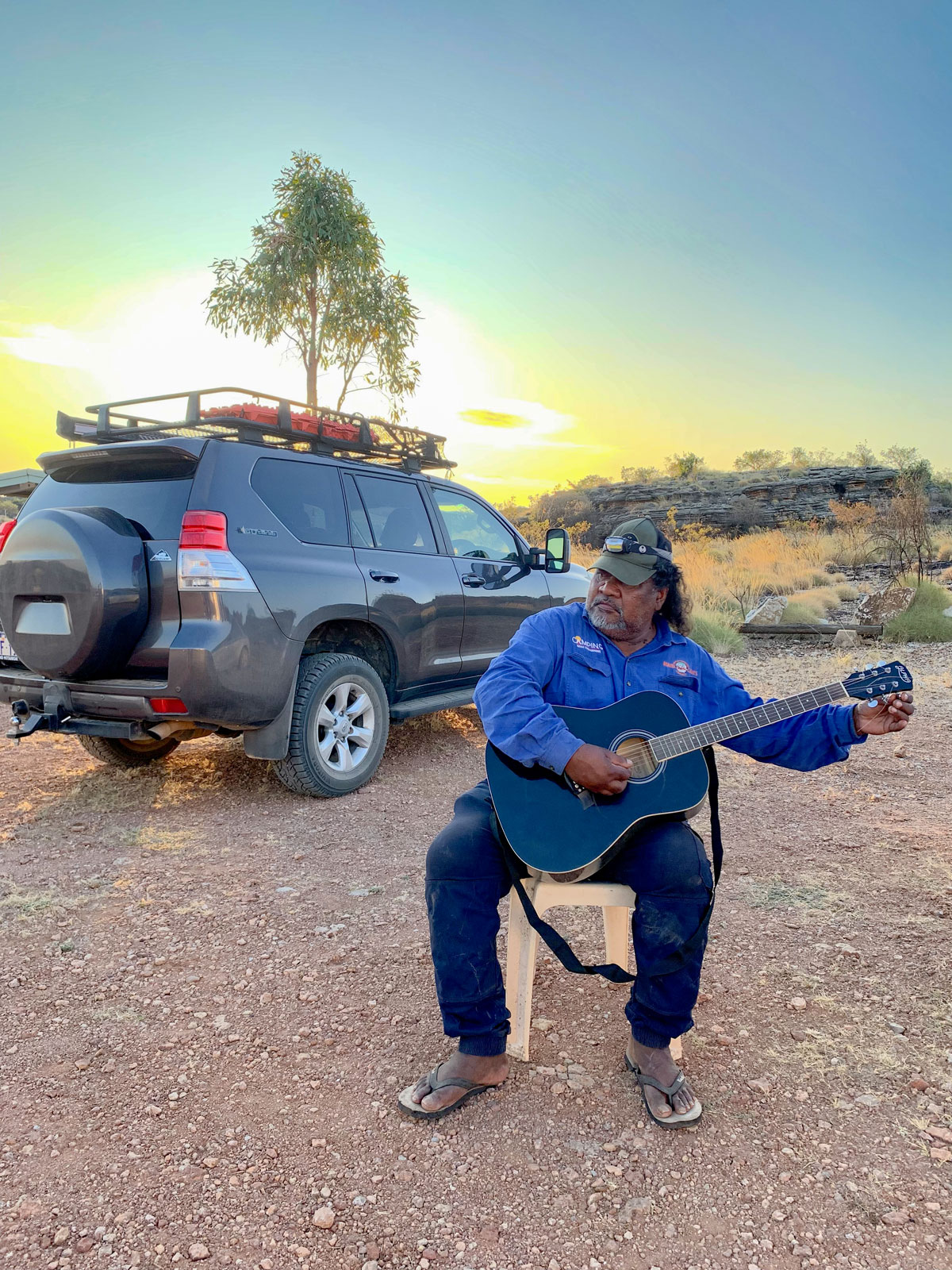
An artful end
Just 200km east at the northern edge of the Great Sandy Desert is Halls Creek. Home to 1500, the tight-knit community is at the entrance of famed Kimberley wonders, the World Heritage-listed Bungle Bungle Range in Purnululu National Park (108km) and Wolfe Creek Crater (150km). Closer to home, there’s China Wall, a natural white quartz barrier standing up to six metres, snaking 15km across the Kimberley.
But nowhere are its surrounding landscapes better captured than at Yarliyil Art Centre. The indigenous-owned studio and gallery features the works of more than 100 local artist members from language groups, Jaru, Gija and Walmajarri. Themes of bushtucker, Dreamtime and country are captured in vivid colour.
One painting with a particularly contemporary feel spoke to me. A canvas dotted with vibrant swirls of purples, reds, pinks and blues depicting Witjangoongi (Jaru) or freshwater mussels found in nearby Sturt Creek.

In the written description, artist Diane Sambo notes the mussels – the size of a human palm – are a relished treat.
“We boil them up, add salt and pepper as they are really good for you, good for flu and sore throat!”
From beach to creek, it appears that you’ll always find a way to indulge in Omega-3; just maybe not always in the ways you imagined.
*The pearl was 9mm, graded as lightly blemished but good lustre valued at $107. A pearl retrieved on another day measured 12mm, graded as near-round, lightly blemished and good lustre valued at $1239.
Contact information:
Mimbi Caves Tours and Campground




